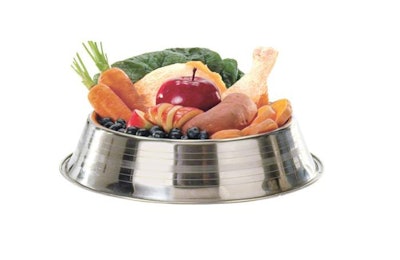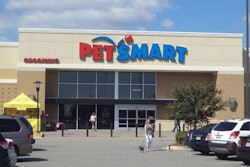
The pet food market owes its ongoing strength at least partially to innovation and product development, and for several years now, much of that has been based on introducing novel ingredients into pet foods and treats. With pets being full-fledged family members, especially in developed markets around the world, pet parents want and expect to find pet food products using many of the same ingredients they seek in their own foods, especially in the area of proteins.
So, gaining regulatory approval to use new ingredients in pet foods is a crucial underpinning to many pet food companies’ business models. Yet in the US, the ingredient approval process may be approaching a tipping point – some would even say a potential crisis point.
In question is a memorandum of understanding (MOU) between the Food and Drug Administration (FDA), which regulates pet foods in the US, and the Association of American Feed Control Officials (AAFCO), which approves definitions for ingredients used in pet foods. Originally adopted in 2007, the MOU has been extended three times since, with the latest extension set to last through October 1, 2017. No one really knows what might happen after that – obviously a concern for our industry.
“The problem with this cooperative activity is that although the AAFCO process is scientifically rigorous, from FDA’s perspective it is based on enforcement discretion – i.e., not a formally sanctioned procedure for acceptance of new feed ingredients,” wrote David Dzanis, DVM, PhD, DACVN, in a Petfood Insights column at the end of 2012, after the second extension of the MOU.
Or, as George Burdock, PhD, president of the Burdock Group, explained during the recent Feed and Pet Food Joint Conference 2016 held in Des Moines, Iowa, USA, the MOU does not carry the force of law for FDA or at the national level, only being viable for those states that have chosen to adopt it. (While AAFCO’s members are state feed and pet food officials and regulators, the organization itself is not a regulatory body and has no legal authority.) FDA’s legal counsel has advised for several years now that the lack of force of law at the federal level leaves the agency on shaky ground, even though all the ingredients approved via the AAFCO definition process have been safely used in pet food products.
500 pet food ingredients and counting
And that brings up another issue, which is where the potential crisis may truly loom. Besides jeopardizing future approval of new pet food ingredients via the AAFCO definition process, discontinuation of the MOU could make as many as 500 ingredients currently used in pet food suddenly non-compliant with the law.
There are two other avenues for pet food or feed ingredients to be approved through FDA: the food additive petition (FAP) or the generally recognized as safe (GRAS) process. Both are fairly onerous processes, particularly FAP. “To date, only 59 food additives for use in animal feed have been codified in the Code of Federal Regulations since the passage of the Food Additives Amendment of 1958,” Dzanis wrote in 2015, when FDA issued a guidance document to help pet food companies with the process. (He added that an FDA employee had told him filing of FAPs for new pet food ingredients had been increasing. Perhaps this was because of concern over the MOU expiring?)
The GRAS process is also rigorous and challenging, and while used frequently in human food, it hasn’t really caught on in pet food since FDA approved its use for animal food ingredients in 2010; only 22 animal feed ingredients have been approved via this route, compared to more than 600 in human food, Dzanis wrote (pointing out that the process has been in place for the latter a much longer time). In fact, FDA just recently clarified and finalized its GRAS rules for human and pet food ingredients, despite being used in human food since 1997. Perhaps that will lead to more GRAS notifications for pet food ingredients – again, possibly spurred by the MOU concern?
But that still leaves those 500 ingredients currently in use. Burdock said 250 of those might be “GRAS-ed” by the Center for Veterinary Medicine (CVM, the agency within FDA that oversees animal food), because sufficient documented information exists to prove the ingredients’ safety through the GRAS process. Another 30 ingredients might be approved relatively quickly by CVM as food additives for the same reason. “For the remaining 220 ingredients, inadequate information is available for GRAS or FAP, so they would likely have to go through full FAPs or be considered illegal, according to CVM,” Burdock said.
The main point in Burdock’s presentation was, “Do your GRAS now before CVM does it for you!” He proposed a plan for the pet food industry based on forming ad hoc committees to share costs and other resources to make the ingredients legitimate, including the necessary research and production to prove their safety for GRAS notifications. Precedents for this type of plan can be found in other industries, including segments of human food.
FDA official: no abrupt changes
Other officials and pet food experts do not see the situation as quite as dire. In a presentation later that day at the conference, Stan Cook, a senior board director with AAFCO and co-chair of its Pet Food Committee, barely addressed it, though he was asked about it by an audience member. He responded that his committee would be meeting with CVM the same week, and this topic was definitely on the agenda.
Jenny Murphy, consumer safety officer with CVM’s Office of Surveillance and Compliance, also spoke at the conference and was in the audience for the other presentations. Though she did not speak up during Burdock’s session (to be fair, there was little time for questions at the end of that session), she did answer the question from the audience immediately after Cook’s response.
CVM plans to continue working with AAFCO on this, she said, and understands the ingredient issue needs to be addressed; frankly, the Food Safety Modernization Act (which she presented on twice during the conference) has been taking up most of the agency’s resources. CVM has been trying to move faster on approving and processing FAPs and GRAS notifications, but otherwise, Murphy foresees no changes soon.
The bottom line: CVM has no plans to abruptly change anything. “We wouldn’t do anything to affect the safety or availability of pet foods,” Murphy said. “That would be hugely problematic for consumers and pet food companies, and I think Congress would frown on that.”



















